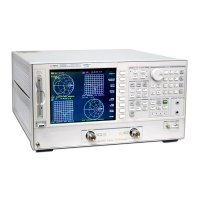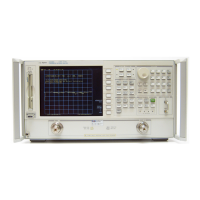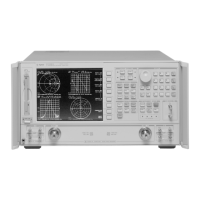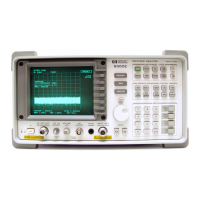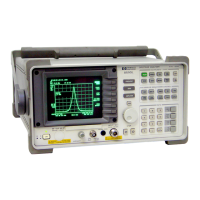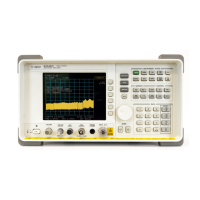1-24
Making Measurements
Using Markers
Using Markers
The key displays a movable active marker on the screen and provides access to a series of menus
to control up to five display markers for each channel. Markers are used to obtain numerical readings of
measured values. They also provide capabilities for reducing measurement time by changing stimulus
parameters, searching the trace for specific values, or statistically analyzing part or all of the trace.
Markers have a stimulus value (the x-axis value in a Cartesian format) and a response value (the y-axis value
in a Cartesian format). In polar format, the second part of a complex data pair is also provided as an auxiliary
response value. In Smith chart format, the real and imaginary rectangle are both displayed, and the effective
capacitance or inductance of the imaginary part is also displayed. When a marker is activated and no other
function is active, its stimulus value is displayed in the active entry area and can be controlled with the knob,
the step keys, or the numeric keypad. The active marker can be moved to any point on the trace, and its
response and stimulus values are displayed at the top right corner of the graticule for each displayed
channel, in units appropriate to the display format. The displayed marker response values are valid even
when the measured data is above or below the range displayed on the graticule.
• If you activate both data and memory traces, the marker values apply to the data trace.
• If you activate only the memory trace, the marker values apply to the memory trace.
• If you activate a memory math function (data/memory or data-memory), the marker values apply to the
trace resulting from the memory math function.
Marker values are normally continuous: that is, they are interpolated between measured points. They can
also be set to read only discrete measured points. Markers normally have the same stimulus values for all
channels, or they can be uncoupled so that each channel has independent markers, regardless of whether
stimulus values are coupled or dual channel display is on.
To Use Continuous and Discrete Markers
The analyzer can either place markers on discrete measured points, or move the markers continuously along
a trace by interpolating the data value between measured points.
• Press and select one of the following choices:
— Choose if you want the analyzer to place markers at any point on
the trace, by interpolating between measured points. This default mode allows you to conveniently
obtain round numbers for the stimulus value.
— Choose if you want the analyzer to place markers only on measured
trace points determined by the stimulus settings. This may be the best mode to use with automated
testing, using a computer or test sequencing because the analyzer does not interpolate between
measured points.
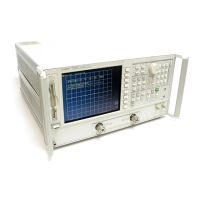
